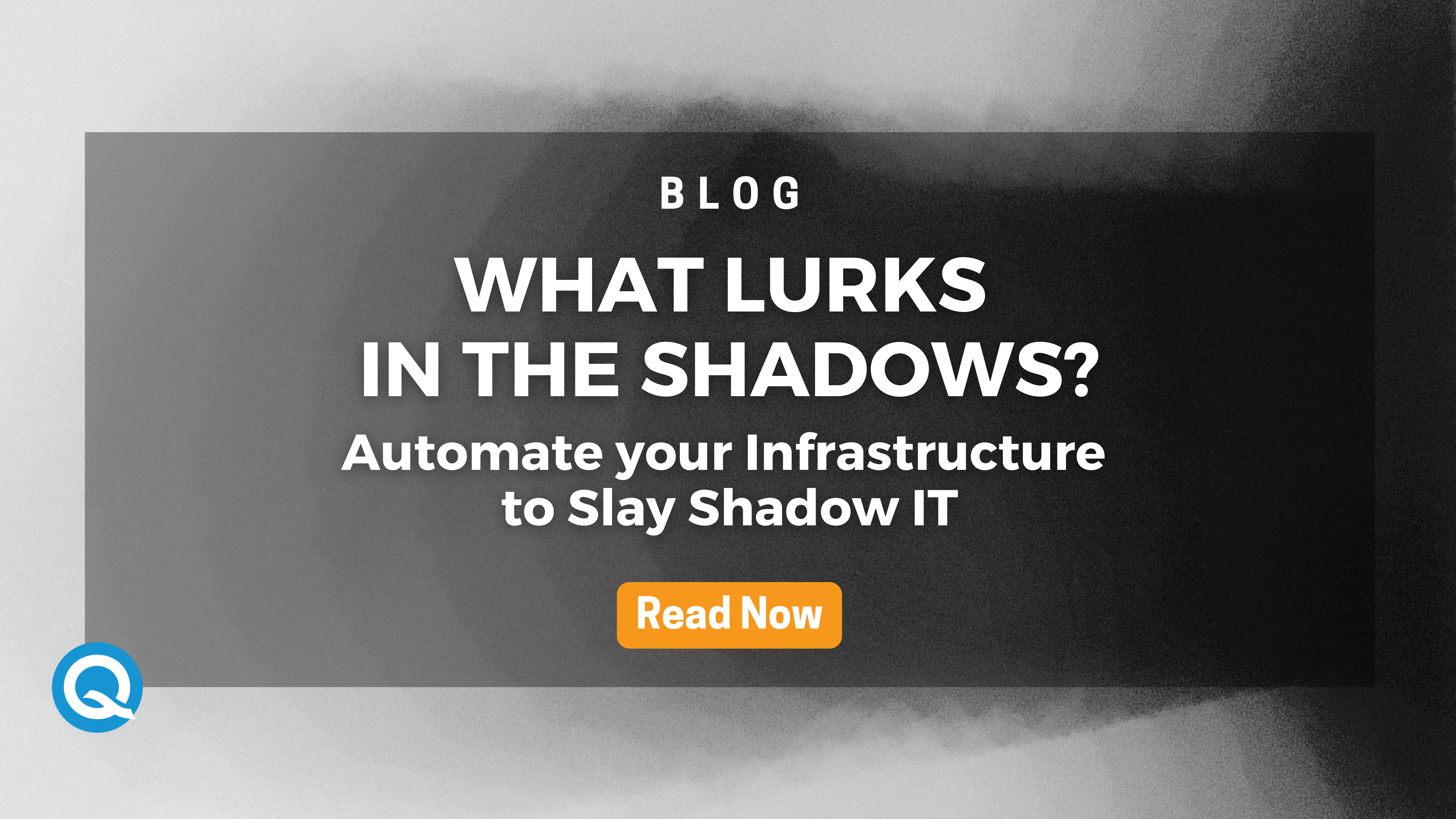It presents a clear and immediate threat to your security, yet it can be virtually invisible. It sends chills down the spine of ITOps professionals and CISOs everywhere. In the age of rapid digital transformation, companies of all kinds are haunted by the proliferation of shadow IT.
Shadow ITemerges when there are too few ITOps resources, causing long delays in provisioning the environments that developers need to do their jobs. Additionally, burdensome IT Service Management processes can further strain engineering organizations under pressure to accelerate releases. So, developers—at least those with the know-how to do so—may create their own environments to speed DevOps projects. Many problems can stem from the existence of shadow IT. But three of the most beastly business problems that can gravely impact your business are data security, compliance, and governance. And the best weapon against shadow IT is infrastructure automation.
How You Can Protect Yourself from Shadow IT with Infrastructure Automation
Keep Your Data Secure
In order to properly configure environments for development, testing, and production, you need data. Regardless of what kind of data your business requires, it can be vulnerable to malicious actors in an unmonitored or improperly configured environment.
Those who require environments in order to do their jobs must be disincentivized from sidestepping ITOps to acquire those resources. Through infrastructure automation, you can eliminate long waits for environment provisioning and, therefore, minimize the incentives for developers to create their own environments.
Infrastructure automation also allows ITOps to configure environment blueprints that incorporate embedded data security best practices, as well as internal security protocols. This way when authorized employees provision environments through self-service, those environments will include the necessary data security requirements.
Maintain Compliance
Compliance is the other side of the data security coin. Businesses in the financial services, healthcare, e-commerce, technology, and just about every industry sector must contend with a web of compliance regulations that govern how data is used, stored, and—most importantly—protected.
A rogue developer provisioning their own environment likely isn’t aware of all the relevant compliance regulations; they may not even care in some cases. And they shouldn’t necessarily be expected to understand the ins and outs of GDPR, CCPA, HIPAA, PCI, and other compliance standards.
By automating the provisioning of environments, developers can have almost immediate self-service access to environments configured by ITOps teams that follow the industry compliance regulations, as well as internal compliance standards. Self-service access to environments can even be governed by Role Based Access Controls (RBAC) to ensure that developers are using the appropriate environment for any given project.
Control Your Resource Consumption
Shadow IT can also cause unnecessary resource consumption, inflating cloud costs without your company even knowing it. But infrastructure automation provides a greater level of visibility into—and control over—who is using your cloud resources and for how long.
Not only can environment provisioning be automated, but environments can be automatically decommissioned when they are no longer needed. For example, when a developer needs a cloud environment for testing, it can be scheduled for automatic tear down when the developer’s task is complete. This will protect against, say, a developer forgetting to decommission an environment or intentionally holding onto it for a future project. Meanwhile, that environment would be consuming cloud resources while it sits idle.
By giving developers quick and easy access to the environments they need, they will be less likely to circumvent the ITOps team’s centralized process, allowing IT to maintain visibility on cloud resources. Additionally, ITOps teams can take advantage of automated tagging of cloud resources to track consumption back to the business unit or use case. This may help identify the unauthorized use of cloud resources and avoid unnecessary cost inflation.
Avoid the Horrors of Shadow IT
A robust infrastructure automation solution will help protect your business from the havoc that shadow IT can wreak on your business. Self-service environment provisioning can help balance the speed of innovation without sacrificing security and access to infrastructure. It also allows ITOps to build blueprints for environment-specific blueprints and enforce their adoption by the right people and for the right application through role-based access controls throughout the organization. Quick and easy automation of the necessary environments will incentivize DevOps teams to follow IT protocols, avoiding the temptation to craft their own solutions.
If there’s shadow IT lurking in your infrastructure, it can cause more than just organizational nightmares. It can drain your resources and put your organization at risk. Failure to meet security protocols and compliance standards because of rogue environments is not only a liability, but it can also be costly. And a lack of governance over cloud resources can leave you with bloated budgets. Infrastructure automation ensures you gain speed, visibility, and control, so you can shine a light on your infrastructure and eradicate shadow IT.
Learn more about how infrastructure automation can benefit your business by checking out CloudShell.





